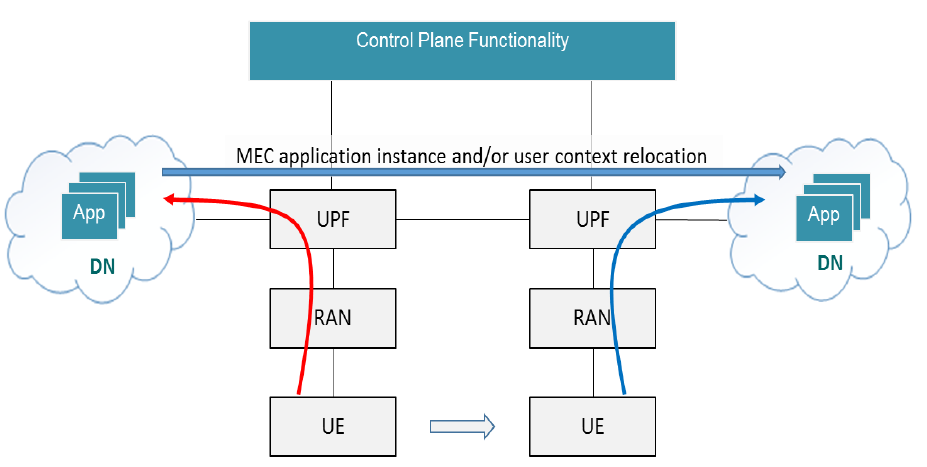MEC多接入边缘计算及关键技术
571 浏览 5 years, 8 months
4.2.4 UE and application mobility
版权声明: 转载请注明出处 http://www.codingsoho.com/The MEC system combines the environments of networking and computing at the edge of the network to optimize the performance for ultra-low latency and high bandwidth services. One direct consequence of hosting the applications at the edge, possibly even very close to the radio nodes, is the exposure of those applications to UE mobility. The UEs, whether traditional handheld devices or vehicles equipped with V2X systems, are expected to be mobile, and their movements may render the location of the currently used edge application host non-optimal in the long run, even though the underlying network maintained the service continuity between the endpoints. For the MEC system to maintain the application requirements in a mobile environment, application mobility is required. In practice, this means that the application instance that is serving the user is changed to a new location. And consequently, for stateful applications, the user context also needs to be transferred. In wide area MEC deployments it can be anticipated that the MEC hosts in the system are provisioned and configured with the application supported across the system, thus reducing the likelihood that an application needs to be relocated from one host to another. This, however, does not yet remove the need for a user context transfer between the source and the target MEC host for stateful application services.

The MEC application mobility feature is a work in progress in ETSI ISG MEC. The current definitions of the feature are grouped into procedures that may or may not apply depending on the characteristics of the application, environment and capabilities of the MEC host, MEC orchestrator and also of the MEC application itself. The procedures that are currently being developed are application mobility enablement, detection of UE movement, validation of application mobility, user context transfer and/or application instance relocation, and post-processing of application relocation. Ways in which a mobile UE application client may contribute to the enablement of the application mobility service to achieve the service continuity of the application are also being considered.
The detection of UE movement to a new serving cell is one of the triggers for application mobility, which may rely on the 5G Network Exposure Function (NEF) and the ability of the MEC functional entities to subscribe to relevant event notifications available there. The MEC platform may also subscribe to the Radio Network Information produced by the RNIS [5]. Through Radio Network Information the platform can identify UEs experiencing cell change and determine whether they are about to move out of the serving area of the current MEC host.
Applications running in the MEC system may produce a wide range of services from multi-media and gaming to machine type services like V2X. This variety creates significant complexity for application mobility support. The application/service providers should consider all aspects of the application lifecycle in the mobile environment, including the application mobility, when planning their application and its roll-out in the network edge.
An application service may be categorized as either a stateful or a stateless service. Application mobility for a stateful service requires transferring and synchronizing the service state between the original and relocated application instance in order to provide service continuity. Service state synchronization highly depends on the implementation of the application itself, thus requiring support from the application developer. In other words, the application must be designed in such a way that multiple instances of the application can run concurrently, and state (context) of the application instance can be captured in the source instance and copied to another instance independently from the operation of the instance itself. Then the service produced by the relocated application instance in the target MEC host can continue in a seamless manner from the state of the application instance in the source MEC host at the time of UE disconnection from that. The support of application mobility for a stateless service, on the other hand, is relatively simple as most likely it will not need service state (application context) transfer and synchronization between the original instance in the source and the instance in the target.
Application mobility is a unique feature of the MEC system. It is necessary to be able to relocate a user’s context and/or application instance from one MEC host to another to continue offering an optimized service experience for the user. Application mobility is a part of service continuity support, in which the service to the UE will resume once the user’s context and/or application instance has been relocated to another MEC host. The following figure illustrates the basic scenario for application mobility in an integrated MEC deployment in a 5G network.